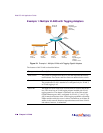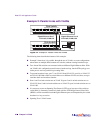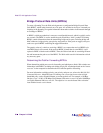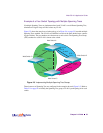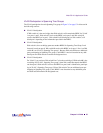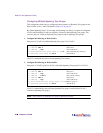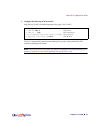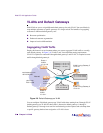
Web OS 10.0 Application Guide
Chapter 2: VLANs
51
212777-A, February 2002
Multiple Spanning Trees
Web OS 10.0 supports up to 16 instances of Spanning Trees or Spanning Tree groups. Each
VLAN can be placed on a unique Spanning Tree group per switch except for the default Span-
ning Tree group (STG 1). The default Spanning Tree group (1) can have more than one VLAN.
All other Spanning Tree groups (2-16) can have only one VLAN associated with it. Spanning
Tree can be enabled or disabled for each port. Multiple Spanning Trees can be enabled on
tagged or untagged ports.
NOTE – By default, all newly created VLANs are members of Spanning Tree Group 1.
Why Do We Need Multiple Spanning Trees?
Figure 2-3 shows a simple example of why we need multiple Spanning Trees. Two VLANs,
VLAN 1 and VLAN 100 exist between Web switch A and Web switch B. If you have a single
Spanning Tree group, the switches see an apparent loop, and one VLAN may become blocked,
affecting connectivity, even though no actual loop exists.
If VLAN 1 and VLAN 100 belong to different Spanning Tree Groups, then the two instances
of Spanning Tree separate the topology without forming a loop. Both VLANs can forward
packets between the Web switches without losing connectivity.
Figure 2-3 Using Multiple Instances of Spanning Tree Protocol
Spanning Tree Group 1: VLAN 1
Spanning Tree Group 2: VLAN 100
VLAN 1
VLAN 100
Web Switch B
Web Switch A






